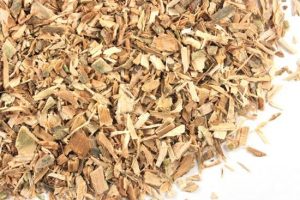 History
History
Willow bark is one of the most fascinating of medicinal herbs, just because it has an extensive history. Willow bark is one of the oldest known pain killers in history. In fact, it was known to be used by ancient Egyptians and appears in the medical writings of Hippocrates from back around 400 B.C. where he mentions preparing as a tea. At that time, people also chewed on the bark itself. In other words, that’s a pretty tried and true remedy! Willow bark was also one of the founding ingredients in aspirin and is rich in salicylic acid properties, which is where the analgesic qualities come in. Of course, scientists used a lot of synthesis methods to refine the properties.
Topical Uses
- Acne
- Aging
Internal Uses
- Anti clotting
- Headache
- Muscle Pain
- Menstrual Cramps
- Back Pain
- Arthritis
- Spinal Conditions
- Fever
- Osteoarthritis
- Anti-inflammatory
- Weight Loss (white willow is believed to help lose weight)
- Flu
Preparation
How should you prepare it? We recommend white willow as a tea, blended with other herbs. We will often add about 1 Tablespoon to our tea mixture* and allow the willow to steep a bit longer than regular tea to pull out all the healing properties – about 10 to 15 minutes. Because it’s a bark, it can steep a bit longer if desired. White willow bark is also available as an extract or you can make your own tinctures. (See below on tea mixtures)
Where to Get It
Tea grade white willow is available here.
Cautions
If you have issues with aspirin, make sure you consult a doctor before you take white willow. White willow may not be good for young children (as with aspirin). As with any herb or home remedy, always consult a physician (err on the side of caution my friends whenever in doubt). Happy Herbaling!
Extras
Humblebee has a neat recipe for a white willow anti-acne topical *”Tea mixture” is the blend of herbs we are using for the tea, so it’s going to vary based on the ailment we’re working on. One thing we really like to do is start with a green tea base, for both the health qualities of green tea and …. well, it just tastes good :). However, if you use a green tea base, be sure to add your green tea after your herbals have had time to steep. Otherwise, your green tea may “stew” and got soggy and weird because that only is supposed to steep for about 4 minutes on average. Herbal mixes are great too. Good herbal bases for most ailments include things like raspberry leaf, passionflower, and chamomile.
